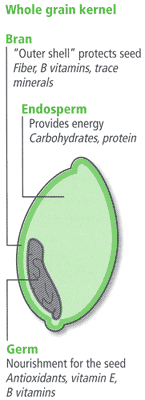Botanical Name : Canarium album
Family: Burseraceae
Genus: Canarium
Kingdom: Plantae
Division: Magnoliophyta
Class: Eudicotyledoneae
Subclass: Rosidae
Order: Sapindales
Common Name : Chinese Olive,White olive
Habitat : Canarium album is native to the subtropics of Asia. It is different from European olive which is basically for oil. In case of Chinese olive, it is the dried fruits and the nuts which are consumed.Chinese olive trees are planted in Vietnam, Japan, Malaysia, etc besides China.. The native habitat is in 22°N-26°N. An annual average temperature of 20-22° C is needed, with a rainfall of 1200-1400 mm. It is cold sensitive and does not withstand sub-zero temperature.
Description:
Canarium album is a midium sized tree of about 10-18 m high,trunk and branch with aromatic resin, odd-pinnate compound leaf,alternate; leaflet with petiolule, opposite, entire, papyraceous to coriaceous; slightly concave reticulate veins giving a special smell while twisted; floret unisexual or polygamous; staminate inflorescence thyrsoid, pistillate inflorescence racemose, inflorescences terminal or axillary, corolla white to yellowish white.
Fruit an elliptic to ovate drupe; epicarp thick, yellowish green when mature; putament hard, two ends pointed, trachyspermous; seeds 1-2.
Flowering takes place in April to May. The fruits mature from October to December.
The tree is planted in China along the highways, streets and in gardens.
Edible Uses:
The fresh fruit is crisp, first tastes a little bitter, and then tastes fragrant, sour, and sweet after chewed for a longer time. It is used in stir-fry dishes and loved with chicken. It is one of the two most common items used in the making of crack seed. It is also used in varieties of preserved fruits and beverages.
…
Food value: (on zero moisture basis)
Fruit = 6.1% protein, 6.1% fat, 81.8% total carbohydrates, 17.2% fiber, 6.1% ash, 91 mg calcium, 146 mg phosphorus, 10.6 mg iron, 237 mg sodium, 2,101 mg potassium, 1,667 ug beta-carotene equivalent, 0.10 mg thiamine, 0.567 mg riboflavin, 2.02 mg niacin, 101 mg vitamin C.
Dried fruits and seeds are also edible and are eaten in China.
Medicinal Uses:
In China, the fruit, nut, seed, and root have been used as medicines for a long time.
Traditional Chinese Medicines (TCM) regards that Chinese Olive fruit remove heat from the lung, relieve sore throats, promote the production of body fluid and detoxicating, and is used for swollen and sore throat, excessive thirst, hematemesis due to cough, lacillary dysentery, epilepsy, puffer poisoning, alcoholism, etc.
In Chinese medicine the raw fruit is an antidote for eating poisonous fish. It is used for sore throat, toothache, inebriation, and diarrhea. The ripe fruit is edible and considered sedative. It is used as a liver tonic and to eliminate apprehension. The powdered seed has been used to treat earache, inflammation. It is believed to also dissolve fish bones swallowed accidentally, while juice from the kernel is reputed to soften bones lodged in the throat.
Other Uses:
Wood is used for timber, ship building and for making furniture.
Disclaimer:The information presented herein is intended for educational purposes only. Individual results may vary, and before using any supplements, it is always advisable to consult with your own health care provider
Resources:
http://www.fruitipedia.com/chinese_olive%20-%20Canarium%20album.htm
http://www.herbnet.com/Herb%20Uses_UZ.htm
http://en.wikipedia.org/wiki/Canarium
http://www.thaitable.com/thai/recipe/chinese-olive-fried-rice
Related articles
- Pediatrics and Family Medicine Specialist Dr. Hillary Roland Joins San Francisco Acupuncture and Chinese Medicine College (prweb.com)
- Elaeagnus angustifolia (findmeacure.com)
- Euryale ferox (findmeacure.com)
- iVillage Recipe: Golden Flapjacks to Ease January Blues (eatlikeagirl.com)
- Chinese Medicine: Keeping the Balance (everydayhealth.com)
- Sight Words Worksheets and Printables (education.com)
- Fruit of the Week – Lychee (beatcancer2010.wordpress.com)
- Rubus coreanus (findmeacure.com)




































